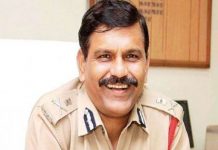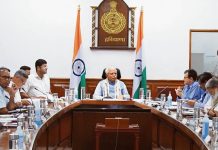WHO: Baroda-born Upadhyay completed her Bachelor’s (Painting) and Master’s (Printmaking) in Fine Arts from MS University, Baroda. She moved to Mumbai in 1998. The city features heavily in her work. Her work has been exhibited at the The Art Space, Sydney, Bodhi Art, Singapore, Nature Morte, New Delhi, and most recently at the Vadehra Art Gallery, New Delhi.

What is the one incident that changed or formed your artistic vision?
It was a very personal experience. This is back in 1995. I was still in college when my father lost his foot to gangrene. The whole family dynamics changed. My carefree nature changed, along with the way I looked at the world. I needed an outlet to express that. I developed a language of metaphors and symbolism. For example, I did a whole body of work with toys from my childhood. The whole meaning changed, because now I would look at those toys so differently.
What is the one thought or feeling you have never been able to translate into art?
My work has actually moved on from being personal and subjective to being objective. Part of me is still present in it; but now I work with objects and images rather than the body. I’ve gone from personal surroundings to public spaces; the mental landscape of the city and the claustrophobia and schizophrenia. I can recreate the physical aspects, but how do I regenerate the mental experience of the urban landscape? I have a work that is a 20 feet high wall with a city skyline reproduced in miniature. The audience walks through it, so that they can experience the claustrophobia of a city. They literally feel trapped in that alley. They become participants and voyeurs. They feel what I feel in Mumbai.

What part do Mumbai and the cityscape play in your art?
Moving to Mumbai made my view more panoramic. My family has a history of immigration, moving from Pakistan to India during Partition. I grew up with those stories of life, death and journey. Mumbai is a haven for migrants. It has a very beautiful skyline, but also these little pockets of poverty and claustrophobia, which exist because of the socio-political hierarchy. All parts of the city are thrown together; you’re an unwilling voyeur of everyone else’s life. The politics of the city has lent itself to the aesthetic, which is what I’m interested in bringing to the studio.
Aradhna Wal is a Trainee, Features with Tehelka.
aradhna@tehelka.com













